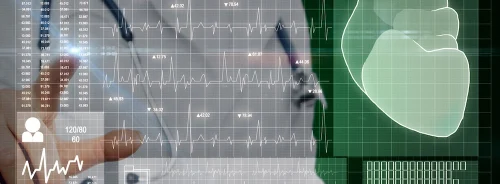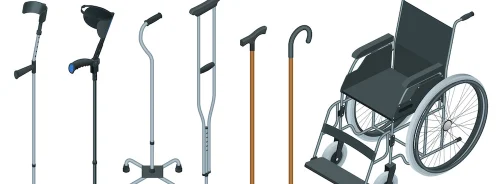Magnetic resonance imaging (MRI) is vital in evaluating and managing neuromuscular diseases, particularly for assessing intramuscular fat accumulation. This biomarker is essential in tracking disease progression and response to treatment. While automated methods are advancing, manual segmentation remains a critical foundation for accurate analysis. The complexity and variability in muscle anatomy necessitate precise manual segmentation, especially in the lower limbs. This article outlines the creation and implementation of a structured training program designed to equip new observers with the skills necessary for reliable manual MRI segmentation.
The Necessity of Manual Segmentation Training
Manual segmentation of MRI scans involves delineating specific muscles and distinguishing them from surrounding tissues, such as intermuscular and subcutaneous fat. This process is particularly challenging in patients with significant fat infiltration, where boundaries can be ambiguous. Accurate segmentation is crucial for quantitative measurements, such as calculating muscle cross-sectional area and fat fraction, which are critical indicators in clinical trials and treatment monitoring.
The training programme addresses the variability and potential errors introduced by different observers, ensuring high interobserver and intraobserver reliability. This consistency is vital for longitudinal studies and for creating accurate datasets used in developing machine learning algorithms for automated segmentation.
Structure of the Training Programme
The training programme consists of two primary phases: the learning phase and the assessment phase.
Learning Phase:
Participants begin with a comprehensive training manual that includes detailed instructions on lower limb muscle anatomy, particularly focusing on the thigh and calf regions. The manual also covers the use of ITK-SNAP software, which is widely used for MRI segmentation. Detailed guidelines are provided for creating both small and large region of interest (ROI) segmentations. Large ROIs encompass entire muscle cross-sections, while small ROIs focus on specific, representative muscle regions to avoid including non-muscle tissues.
The learning phase also involves direct instruction from experienced tutors, who provide hands-on training. This includes reviewing MRI scans, practising segmentation techniques, and receiving immediate feedback. Trainees work with a predefined set of MRI scans from both healthy individuals and patients with neuromuscular diseases to familiarise themselves with a range of presentations.
Assessment Phase:
In the assessment phase, new observers are tested on their ability to segment muscles in MRI scans accurately. This involves analysing additional scans from a separate set of patients and healthy controls, allowing for the evaluation of both interobserver and intraobserver reliability. Key metrics used in this assessment include the Sørensen-Dice similarity coefficient, which measures the overlap between the trainee's segmentations and those of experienced observers, and the intraclass correlation coefficient (ICC), which assesses the consistency of quantitative measurements derived from the segmentations.
This phase is crucial for identifying observers who may require additional training. Observers whose performance significantly deviates from established benchmarks are given targeted feedback and further instruction to correct specific issues.
Achievements and Challenges
The training programme demonstrated significant success, with six out of eight new observers achieving reliability metrics on par with experienced observers. These metrics included high Sørensen-Dice coefficients and ICC values, particularly in the segmentation of calf muscles, which tend to have more distinct boundaries compared to thigh muscles. The programme highlighted the challenges of achieving consistency, particularly in complex cases with significant fat infiltration where muscle boundaries are less distinct.
Two new observers were identified as outliers, primarily due to inconsistencies in defining the muscle boundaries or including non-muscle tissues within the ROIs. These findings underscore the importance of rigorous training and the need for repeated practice and assessment to ensure competency.
A critical insight from the training programme was the superior reliability of large ROI segmentations compared to small ROI segmentations. This finding is particularly relevant for clinical trials, where accurate and consistent measurement of muscle fat fraction is critical for assessing disease progression and treatment efficacy.
Future Directions
The established benchmarks from this training programme provide a valuable framework for future observers, ensuring that they can achieve a high level of proficiency in manual segmentation. As machine learning and automated segmentation tools become more prevalent, the consistency and accuracy of manual segmentations will play a crucial role in training these systems. The benchmarks can serve as a standard for evaluating the performance of these automated tools, ensuring they meet the rigorous standards required for clinical applications.
This training programme represents a significant advancement in MRI-based assessment of neuromuscular diseases. By establishing clear training protocols and benchmarks, the programme ensures that new observers can reliably perform manual segmentation. This not only enhances the quality of clinical data but also supports the development of more sophisticated automated segmentation tools. The program's success underscores the importance of structured training and continuous evaluation in maintaining high standards in medical imaging analysis, ultimately contributing to improved patient care and more effective treatment outcomes.
Source: European Radiology Experimental
Image Credit: iStock
References:
Morrow, J.M., Shah, S., Cristiano, L. et al. (2024) Development of an initial training and evaluation programme for manual lower limb muscle MRI seg






